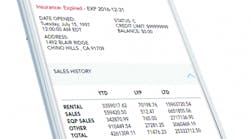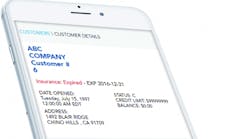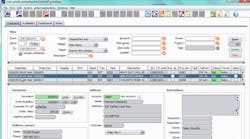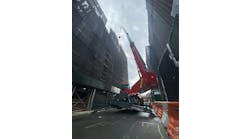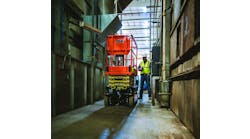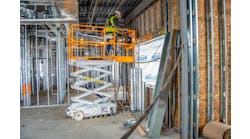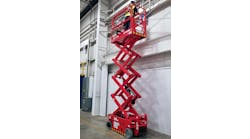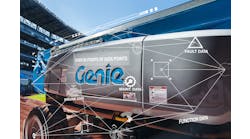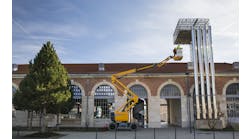Interview with Helen Sowerby: Simplicity, Automation and Personalization
RER speaks with Helen Sowerby, Director of Sales, Wynne Systems about expectations of end users towards telematics information, designing software centering on the asset, using data and software for smarter rental rates, and investing in customer experience.
What are the new developments in your rental software in the past year?
Sowerby: Our mobile applications have gone from strength to strength over the last 12 months. It’s now to the point where we have customers talking about using them as the main method of transacting with their customers, even at the rental counter. Simplicity has been key as far as the end user is concerned. We can take advantage of the embedded technologies in the mobile device to capture geo-location for delivery and pickup signatures, pictures and customizable condition reports for damages and generally aim to close the traditional “holes” caused by non-real-time processing.
As telematics grows in importance in the rental industry, the relationship between telematics and rental software is important. Can you talk about the integration between your software and telematics systems?
Sowerby: We’ve had integrations from telematics devices for a long while now. Acme Lift is a customer that uses telematics across its fleet to manage billing, maintenance and trigger business processes. We have a lot more customers exploring new ways to use telematics at the moment. These include auto-stop and start based on user qualifications, tracking people against machines for usage and work time information, triggering work orders based on specific types of telematics exceptions, etc. There is a whole new world to be explored in customer relationships when it comes to telematics. And now, we’re seeing construction companies -- particularly the larger ones -- push rental companies for more information and more real-time action based on telematics and GPS data.
One of the challenges rental companies face is figuring out how the level of profitability of each piece of equipment or each cat-class. How can your software help with that challenge?
Sowerby: We’ve always designed software that centers on the asset. That means we can get ROI and TCO data to the individual asset level. Once you capture the information at the lowest level you can roll it up to cat-class, equipment segment and any other master data that you wish. This allows you to compare data by manufacturer, model number, location and region. You can truly understand which pieces of equipment are working best for your business and your customers. Once you add telematics data into the mix, you can pull out some interesting reports around some of the costs associated with equipment based on alerts, like accurate usage information or sensor data if you’re looking at engine temperature. This can add depth to your ROI reporting when it comes to delving into the costs.
Another challenge for rental companies is the profitability of bidding on a job, and what type of rate makes sense for them in terms of the kind of ROIC they require. How can your software help rental companies to bid on particular jobs or determine the type of rate that makes sense?
Sowerby: An increasing number of rental companies are looking to outside sources for rental rate information. We can interface out to some of the industry rate specialists who look at big-data type analysis to gauge pricing and rates more accurately. For those companies that choose to manage rates internally or who want to preserve some degree of uniqueness in the market, then we can offer in-depth reporting of past history based on cat-class and customer. Tracking profitability is a whole new ball-game! This is when the power of a fully integrated ERP comes into play, as you can track contract-related POs for transport, re-rents, permits and all of the other costs which can otherwise get lost on a large rental contract or large job site. Reporting software comes into play and we allow customers to embed custom dashboards into the everyday applications that their users access so that the right information is visible at the moment that the user needs to take a business decision.
Increasingly rental customers want as much access as possible to manage their accounts online, have access to billing online, be able to order equipment and call it off-rent online and even be able to determine the availability of equipment from a rental company’s fleet. Are you finding this to be a growing trend and how are you improving in being able to facilitate these functions?
Sowerby: We’ve introduced both consumer-orientated mobile apps to allow customers to access quotes, off-rent equipment, etc. via their mobile devices. We have also broadened out our customer portals to provide more and more functionality to end customers. The question of availability within a rental fleet still remains a contentious issue with many rental companies preferring not to make that information available online, or, if they do, to provide limited information so as not to deter rentals for equipment that may not be available in the immediate area but is available elsewhere. We also have options to allow rental companies to embed self-service reporting and dashboards tailored to individual customers within their portals giving customers access to meaningful data and helping them provide information effectively to their own businesses.
Mobility has been a major topic in recent years, being able to do just about everything on a smartphone that can be done on a laptop or desktop. Any new developments in that area in the past year
Sowerby: We’ve been working hard on building out our mobile apps in the past year, focusing on the areas that supply the biggest impact in terms of ROI for our customers. As we’re seeing, the largest positive impact is to those who perform repetitive tasks but use only few functions of your ERP—like yard personnel. We’ve really focused on their workflow, and have developed features that are really pushing productivity and simplicity. The user interface is simple and straight-forward, and includes features like equipment search, check-out/in, loading and unloading, image capture and signature capture. Each of these features are designed to make every step faster and easier. There’s no point in developing a smaller scale ERP for mobile if it doesn’t offer better productivity or efficiency.
What are important future trends and developments that you see, both from what rental companies are asking for and what your programmers are working on?
Sowerby: There’s a strong need for simplicity, automation and personalization. With so much new tech emerging, companies are now re-evaluating their tech stack and looking for ways to make it easier to manage. They’re also looking for gains in productivity for their end users, which is why mobile has really become the driver when companies are looking for new software. Automation, while not a new trend, is going to continue to grow, and probably at a greater clip than today. With the Internet of Things and big data, the need to automate as much as possible is a necessity—to collect and disseminate the information, to auto-create orders or invoices—it’s near impossible to manage this without some sort of automation and triggers in place.
And personalization is going to take a huge leap. Studies are suggesting that by 2020, the customer experience will surpass pricing and product as the key brand differentiator. Online or offline, companies are going to start investing heavily in customer experience (CX). Many have already invested in customer portals and consumer-based apps as a starter, but the next step is how to deliver relevant and timely account information to your sales reps, call centers or branches—those who need to interact with your customer and create an instant relationship despite having never interacted before. This is when CRM integration and embedded dashboards will become critical.
